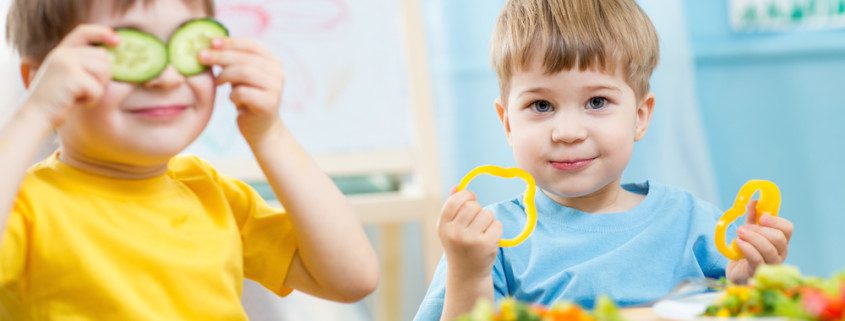Raising Great Foodies
“What do you want to eat on your birthday?” I asked.“Sushi, spinach and Brussels sprouts,” she responded without hesitation. My three-year old toddler was turning four.
People always ask me, how did that happen; how do you get her to eat everything? The answer is: that’s the way she’s eaten since she first began (with solid foods at six months of age).
[su_expanding_quote_book alignment=”right” source_author=”Norah O’Donnell” source_title=”Baby Love: Healthy, Easy, Delicious Meals for your Baby and Toddler” affiliate_link=”http://amazon.to/tocome” full_quote=”Making fresh baby food is pretty simple stuff. In fact, it is really easy and can take less than an hour every two weeks to prepare. You can make two week’s worth of wholesome food in less an one hour a week. There’s no better way to build a foundation for a lifetime of healthy living. Bad eating habits are learned early. It starts with infants and toddlers and the fast-food instinct of feeding from a jar.” short_quote=”Making fresh baby food is pretty simple stuff”]My “recipe” in producing a great foodie is:
- Make good food, pleasing to look at and pleasing to eat. I promised myself I’d never make her eat anything I wouldn’t want to eat. Have you ever tasted Gerber baby food? Yuck. Try fresh pureed peas. Yum. Homemade baby food can be less expensive than store-bought baby foods, which is also cooked at such a high temperature that many of the nutrients and flavor are lost.
- Introduce a wide range of vegetables and fruits over the first two years of life, from peas and sweet potatoes to cauliflower and mango
- Demonstrate by example how delicious it is, licking our own spoons and “ummm, yummm, yummm” making it tantalizing, and when she got a spoonful, “yummy yum yumm”, huge positive reinforcement
- Sit at the table together and eat the same things, hers was pureed the first year, but by her second year, she was eating the same food we were, and I always have an eye on boosting the nutritional and delicious factor of every meal by incorporating several vegetables and fruit
- Talk about what we’re eating, how it grew, the vitamins it has, how our body is loving it, how it will make us healthy, how we are so lucky to eat such delicious food
- If she rejects something, I find a new way to re-introduce it (mixed with other vegetables she likes, or with rice or oatmeal). Sometimes we’d leave the disliked vegetable, but it’d eventually come back at a later time. If at first I didn’t succeed, I tried, tried again.
- Rather than “I don’t like” or more importantly, “you don’t like” it was “you’re not in the mood for this today”, creating the possibility that she could be in the mood another day. This mental shift is even more relevant today as a four-year old when she is starting to experience to peer pressure.
- Get her involved in making meals. At 18 months she would grab handfuls of mixed greens and cut up strawberries to put in a salad bowl, periodically stuffing a handful into her mouth. By two, she was helping make berry muffins, apple pancakes, and spinach quiche, helping herself to berries, apples (and yes, pancake dough). I measure the ingredients, she pours them into the bowl and we take turns mixing.
My life is so much easier, and I believe she is so much healthier because she eats what we eat and delights in vegetables and fruits. At the Saturday Farmer’s Market she dances up and down following her eyes, exclaiming, “Beets! Broccoli! Purple Carrots!” It’s huge fun. Inevitably she wants to take home more than we can eat in a week, and I have to rein in her enthusiasm.
As parents we have a wonderful opportunity to raise children who will intentionally choose nutritious food because it’s delicious. Like a pebble in a pond, making wise food choices day by day will lead to better health and also helps them become better citizens of the earth. Giving children the ability and desire to eat well is a lifetime legacy both for them and for our planet.
[su_expanding_quote_book alignment=”full” source_author=”Pamela Druckerman” source_title=”Bringing Up Bebé, One American Mother Discovers the Wisdom of French Parenting” affiliate_link=”http://amazon.to/tocome” full_quote=”Americans tend to regard vegetables as obligatory vitamin-delivery devices. Although we are desperate for our kids to eat vegetables, we don’t always expect them to. French parents treat their légumes (vegetables) with a whole different level of intention and commitment. They describe the taste of each vegetable and talk about their child’s first encounter with celery or leeks as the start of a lifelong relationship. Vegetables—and also fruits—are the building blocks of their children’s incipient culinary education and a way of initiating them into the richness of taste. Parents take for granted that while kids will prefer certain tastes to others, the flavor of each vegetable is inherently rich and interesting and see it as their job to bring the child around to appreciating this. They believe that just as they much teach the child how to sleep, how to wait, how to say bon jour , they must teach her how to eat.” short_quote=”Americans tend to regard vegetables as obligatory vitamin-delivery devices. Although we are desperate for our kids to eat vegetables, we don’t always expect them to. French parents treat their légumes (vegetables) with a whole different level of intention and commitment”]Some recipes to cultivate foodies:
100 Days of Real Food: Green Eggs and Ham
Epicurous: Very Berry Muffins
Weelicious: Spinach Pesto on Rice
Additional Resources
Weelicious: Homemade Baby Food
Weelicious: 5 Ingredient or Less Homemade Toddler Recipes
100 Days of Real Food: Ten Recipes to Cook with Your Kids
100 Days of Real Food: Kids Cook: A Summer Activity



